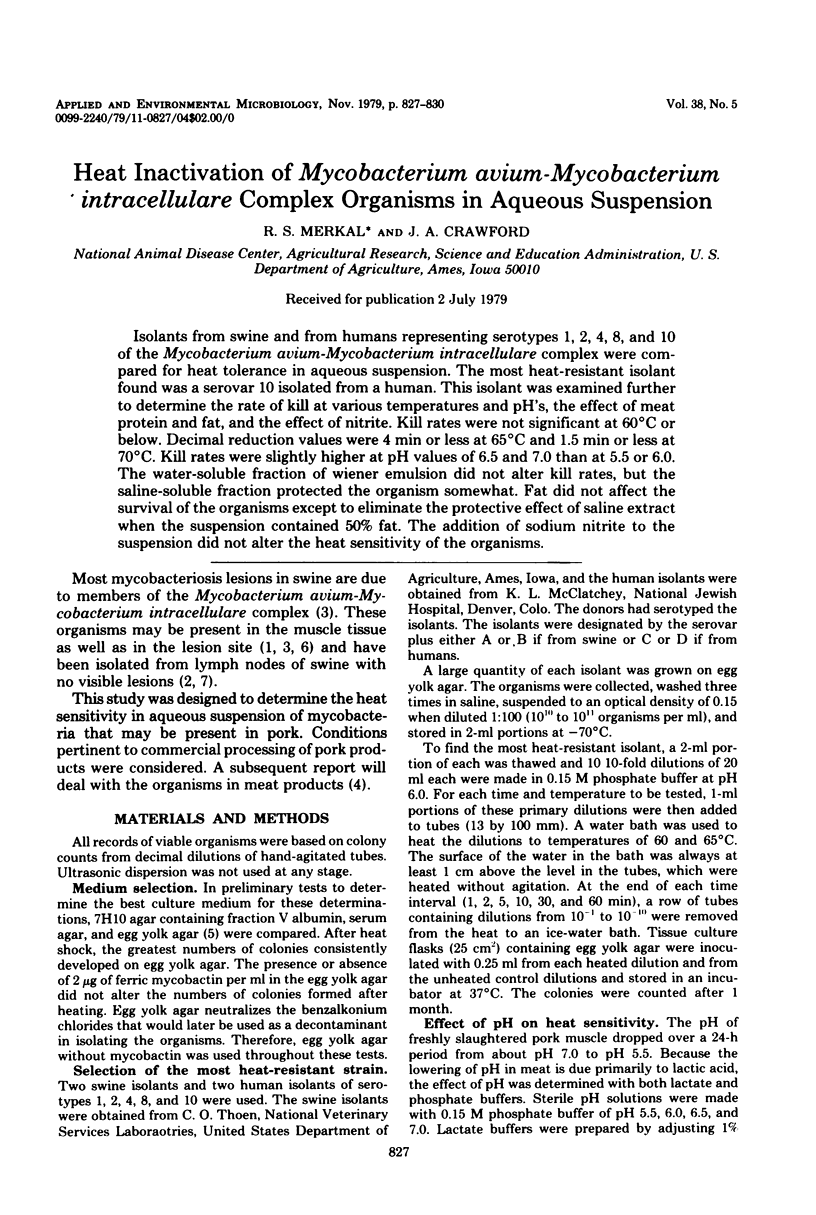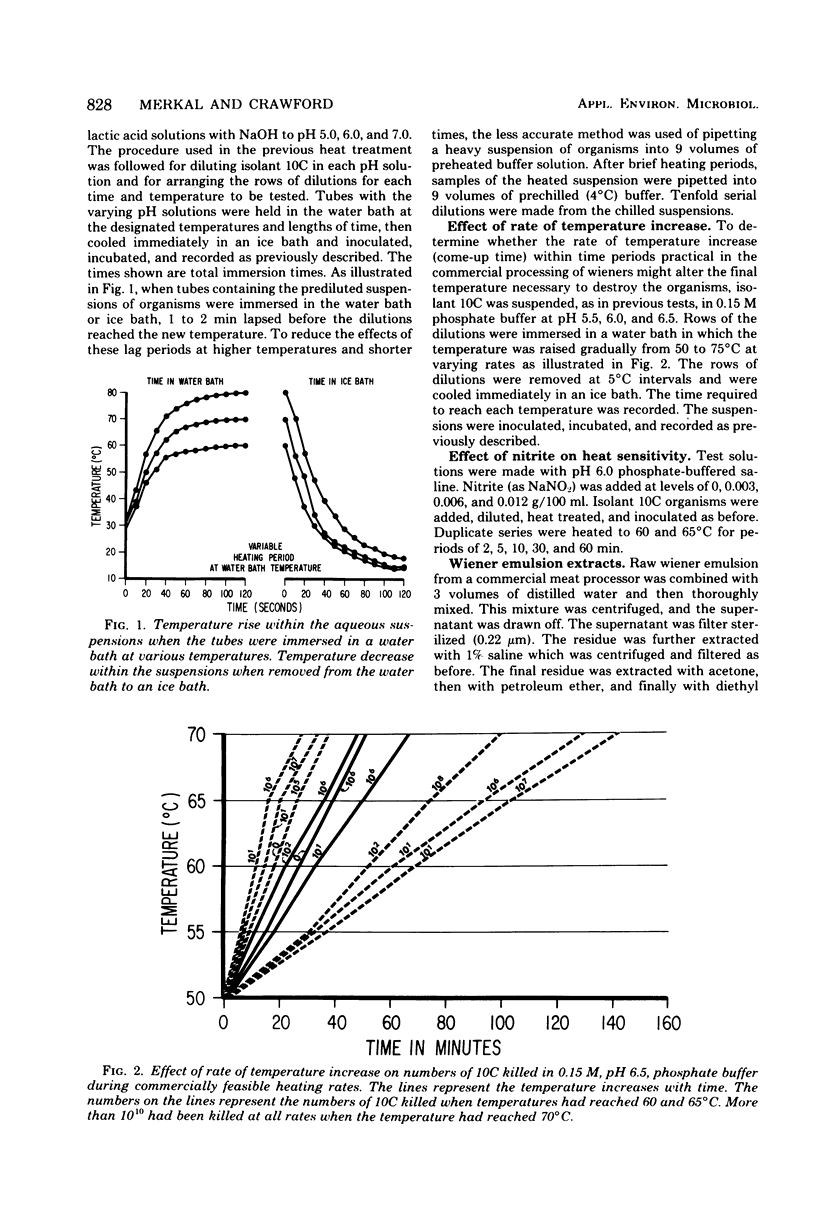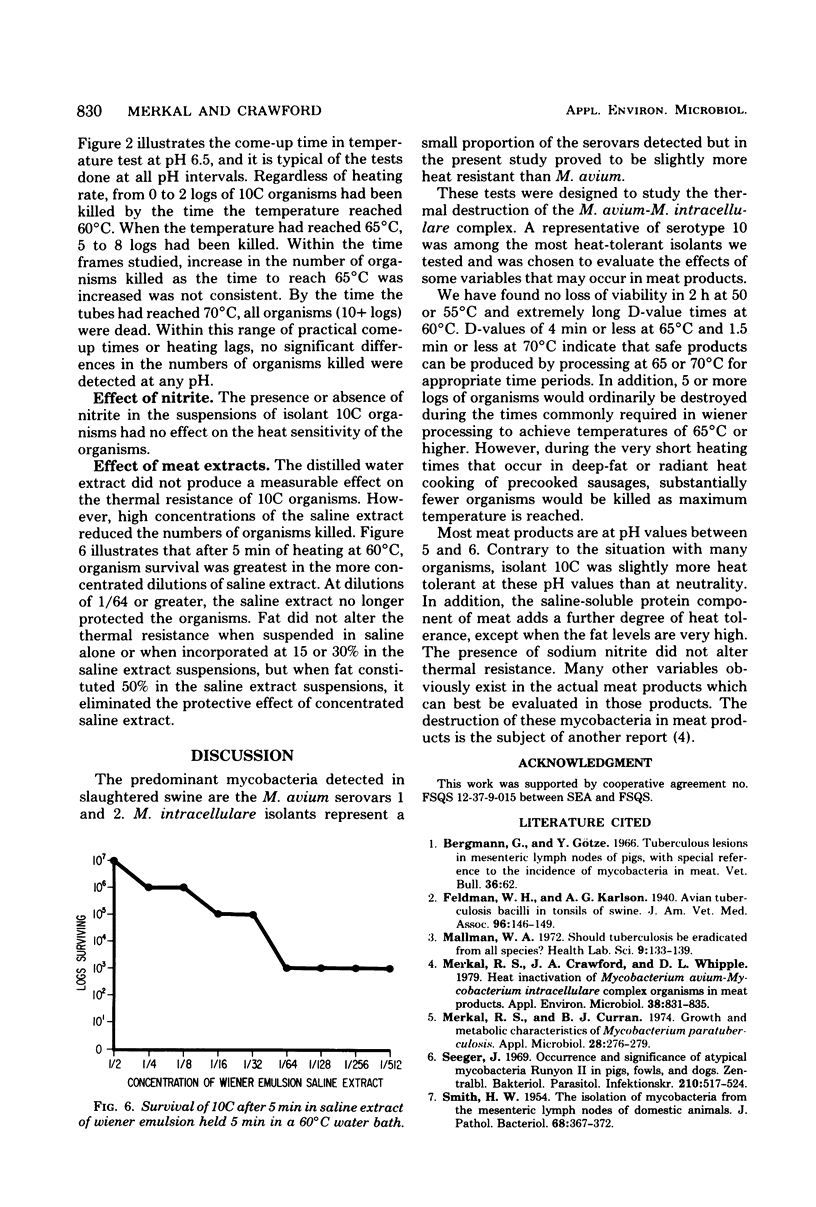Abstract
Isolants from swine and from humans representing serotypes 1, 2, 4, 8, and 10 of the Mycobacterium avium-Mycobacterium intracellulare complex were compared for heat tolerance in aqueous suspension. The most heat-resistant isolant found was a serovar 10 isolated from a human. This isolant was examined further to determine the rate of kill at various temperatures and pH's, the effect of meat protein and fat, and the effect of nitrite. Kill rates were not significant at 60 degrees C or below. Decimal reduction values were 4 min or less at 65 degrees C and 1.5 min or less at 70 degrees C. Kill rates were slightly higher at pH values of 6.5 and 7.0 than at 5.5 or 6.0. the water-soluble fraction of wiener emulsion did not alter kill rates, but the saline-soluble fraction protected the organism somewhat. Fat did not affect the survival of the organisms except to eliminate the protective effect of saline extract when the suspension contained 50% fat. The addition of sodium nitrite to the suspension did not alter the heat sensitivity of the organisms.
Full text
PDF



Selected References
These references are in PubMed. This may not be the complete list of references from this article.
- Merkal R. S., Crawford J. A., Whipple D. L. Heat inactivation of Mycobacterium avium-Mycobacterium intracellulare complex organisms in meat products. Appl Environ Microbiol. 1979 Nov;38(5):831–835. doi: 10.1128/aem.38.5.831-835.1979. [DOI] [PMC free article] [PubMed] [Google Scholar]
- Merkal R. S., Curran B. J. Growth and metabolic characteristics of Mycobacterium paratuberculosis. Appl Microbiol. 1974 Aug;28(2):276–279. doi: 10.1128/am.28.2.276-279.1974. [DOI] [PMC free article] [PubMed] [Google Scholar]
- SMITH H. W. The isolation of Mycobacteria from the mesenteric lymph-nodes of domestic animals. J Pathol Bacteriol. 1954 Oct;68(2):367–372. doi: 10.1002/path.1700680208. [DOI] [PubMed] [Google Scholar]
- Seeger J. Vorkommen und Bedeutung atypischer Mykobakterien der Gruppe II nach Runyon bei Schweinen, Hühnern und Hunden. Zentralbl Bakteriol Orig. 1969;210(4):517–524. [PubMed] [Google Scholar]


